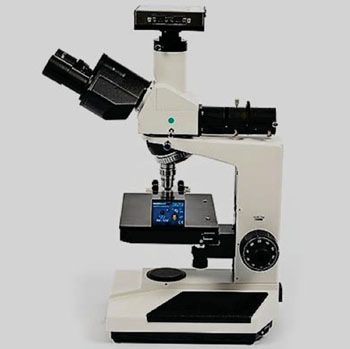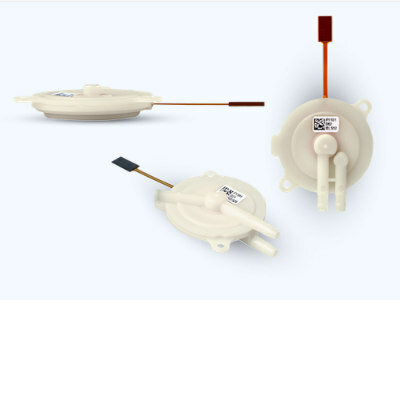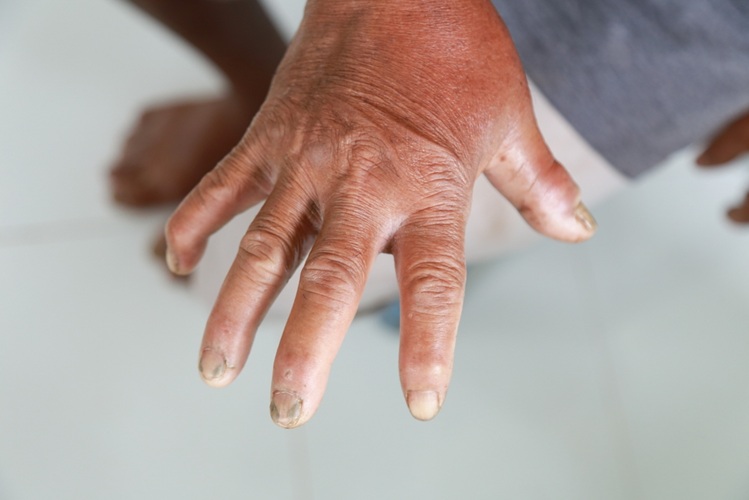Blood Test Biomarker Differentiates Early Stage Pancreatic Cancer
|
By LabMedica International staff writers Posted on 13 Jul 2015 |
A new biomarker that successfully differentiated patients with pancreatic cancer from those with another pancreatic disease could lead to a blood test that detects pancreatic cancer early enough for curative surgery to be feasible.
Pancreatic cancer has a very poor survival rate and ranks fourth as a leading cause of cancer deaths in the USA, where around 46,000 people a year are diagnosed with the disease. One reason the disease is so deadly is because by the time it is diagnosed, the tumor is too advanced for surgery to be an option as only about 15% of patients qualify for curative surgery.
Scientists at the University of Texas MD Anderson Cancer Center (Houston, TX, USA) and their colleagues obtained serum samples and tissue samples from patients with pancreatic cancer, serum samples only from patients with a benign pancreatic disease and from healthy donors, who had no evidence of acute or chronic or malignant disease and had no surgery within the past 12 months. The pancreatic discovery cohort from the University Hospital of Heidelberg (Germany) included 190 patients with a pancreatic ductal adenocarcinoma (PDAC), 18 patients with pancreatitis, eight patients with a benign serous cystadenoma and five patients with intraductal papillary mucinous neoplasm (IPMN).
The team used various techniques to show how a protein released by cancer cells into the bloodstream could be used to screen for early pancreatic cancer. As cancer cells release the protein, which is coded by the gene glypican-1 (GPC1), in small virus-sized particles called exomes. The exomes contain a mixture of DNA, RNA and proteins. Exosome samples from human serum were analyzed using the NanoSight LM10 instrument (NanoSight Ltd, Salisbury, UK). Serum CA19-9 and GPC1 protein levels in patients with pancreatic cancer, pancreatic cancer precursor lesion, or benign pancreatic disease and in healthy donors were assessed using the Cancer Antigen CA19-9 and GPC1 human enzyme-linked immunosorbent assays (ELISA).
Quantitative reverse transcriptase PCR (qRT–PCR) was performed on DNase-treated ribonucleic acid (RNA) using the Invitrogen SuperScript III Platinum One-Step Quantitative RT–PCR System (Life technologies; Carlsbad, CA, USA; www.lifetechnologies.com) on a 7300 Sequence Detector System (Applied Biosystems; Foster City, CA, USA). Analysis of the discovery cohort revealed that the levels of cancer exomes called GPC1+ crExos distinguish patients with histologically validated pancreatic cancer precursor lesions from healthy donors and patients with benign pancreatic disease. The test passed both measures of a successful diagnostic with top marks: specificity by correctly identifying patients with a disease and sensitivity by correctly ruling out those without the disease.
Raghu Kalluri, PhD, MD, a professor and lead author said, “GPC1+ crExos were detected in small amounts of serum from about 250 patients with pancreatic cancer with absolute specificity and sensitivity, importantly distinguishing patients with chronic pancreatitis from those with early- and late-stage pancreatic cancer. DNA, RNA and proteins can be isolated from cancer exosomes and isolated from stored specimen for further genetic and biological analyses. Therefore, cancer exosomes are not just a biomarker but isolating them provides a trove of cancer-specific information.” The study was published on June 24, 2015 in the journal Nature.
Related Links:
University of Texas MD Anderson Cancer Center
University Hospital of Heidelberg
NanoSight Ltd.
Pancreatic cancer has a very poor survival rate and ranks fourth as a leading cause of cancer deaths in the USA, where around 46,000 people a year are diagnosed with the disease. One reason the disease is so deadly is because by the time it is diagnosed, the tumor is too advanced for surgery to be an option as only about 15% of patients qualify for curative surgery.
Scientists at the University of Texas MD Anderson Cancer Center (Houston, TX, USA) and their colleagues obtained serum samples and tissue samples from patients with pancreatic cancer, serum samples only from patients with a benign pancreatic disease and from healthy donors, who had no evidence of acute or chronic or malignant disease and had no surgery within the past 12 months. The pancreatic discovery cohort from the University Hospital of Heidelberg (Germany) included 190 patients with a pancreatic ductal adenocarcinoma (PDAC), 18 patients with pancreatitis, eight patients with a benign serous cystadenoma and five patients with intraductal papillary mucinous neoplasm (IPMN).
The team used various techniques to show how a protein released by cancer cells into the bloodstream could be used to screen for early pancreatic cancer. As cancer cells release the protein, which is coded by the gene glypican-1 (GPC1), in small virus-sized particles called exomes. The exomes contain a mixture of DNA, RNA and proteins. Exosome samples from human serum were analyzed using the NanoSight LM10 instrument (NanoSight Ltd, Salisbury, UK). Serum CA19-9 and GPC1 protein levels in patients with pancreatic cancer, pancreatic cancer precursor lesion, or benign pancreatic disease and in healthy donors were assessed using the Cancer Antigen CA19-9 and GPC1 human enzyme-linked immunosorbent assays (ELISA).
Quantitative reverse transcriptase PCR (qRT–PCR) was performed on DNase-treated ribonucleic acid (RNA) using the Invitrogen SuperScript III Platinum One-Step Quantitative RT–PCR System (Life technologies; Carlsbad, CA, USA; www.lifetechnologies.com) on a 7300 Sequence Detector System (Applied Biosystems; Foster City, CA, USA). Analysis of the discovery cohort revealed that the levels of cancer exomes called GPC1+ crExos distinguish patients with histologically validated pancreatic cancer precursor lesions from healthy donors and patients with benign pancreatic disease. The test passed both measures of a successful diagnostic with top marks: specificity by correctly identifying patients with a disease and sensitivity by correctly ruling out those without the disease.
Raghu Kalluri, PhD, MD, a professor and lead author said, “GPC1+ crExos were detected in small amounts of serum from about 250 patients with pancreatic cancer with absolute specificity and sensitivity, importantly distinguishing patients with chronic pancreatitis from those with early- and late-stage pancreatic cancer. DNA, RNA and proteins can be isolated from cancer exosomes and isolated from stored specimen for further genetic and biological analyses. Therefore, cancer exosomes are not just a biomarker but isolating them provides a trove of cancer-specific information.” The study was published on June 24, 2015 in the journal Nature.
Related Links:
University of Texas MD Anderson Cancer Center
University Hospital of Heidelberg
NanoSight Ltd.
Read the full article by registering today, it's FREE! 

Register now for FREE to LabMedica.com and get complete access to news and events that shape the world of Clinical Laboratory Medicine. 
- Free digital version edition of LabMedica International sent by email on regular basis
- Free print version of LabMedica International magazine (available only outside USA and Canada).
- Free and unlimited access to back issues of LabMedica International in digital format
- Free LabMedica International Newsletter sent every week containing the latest news
- Free breaking news sent via email
- Free access to Events Calendar
- Free access to LinkXpress new product services
- REGISTRATION IS FREE AND EASY!
Sign in: Registered website members
Sign in: Registered magazine subscribers
Latest Pathology News
- Novel UV and Machine Learning-Aided Method Detects Microbial Contamination in Cell Cultures
- New Error-Corrected Method to Help Detect Cancer from Blood Samples Alone
- "Metal Detector" Algorithm Hunts Down Vulnerable Tumors
- Novel Technique Uses ‘Sugar’ Signatures to Identify and Classify Pancreatic Cancer Cell Subtypes
- Advanced Imaging Reveals Mechanisms Causing Autoimmune Disease
- AI Model Effectively Predicts Patient Outcomes in Common Lung Cancer Type
- AI Model Predicts Patient Response to Bladder Cancer Treatment
- New Laser-Based Method to Accelerate Cancer Diagnosis
- New AI Model Predicts Gene Variants’ Effects on Specific Diseases
- Powerful AI Tool Diagnoses Coeliac Disease from Biopsy Images with Over 97% Accuracy
- Pre-Analytical Conditions Influence Cell-Free MicroRNA Stability in Blood Plasma Samples
- 3D Cell Culture System Could Revolutionize Cancer Diagnostics
- Painless Technique Measures Glucose Concentrations in Solution and Tissue Via Sound Waves
- Skin-Based Test to Improve Diagnosis of Rare, Debilitating Neurodegenerative Disease
- Serum Uromodulin Could Indicate Acute Kidney Injury in COVID-19 Patients
- AI Model Reveals True Biological Age From Five Drops of Blood
Channels
Clinical Chemistry
view channel
‘Brilliantly Luminous’ Nanoscale Chemical Tool to Improve Disease Detection
Thousands of commercially available glowing molecules known as fluorophores are commonly used in medical imaging, disease detection, biomarker tagging, and chemical analysis. They are also integral in... Read more
Low-Cost Portable Screening Test to Transform Kidney Disease Detection
Millions of individuals suffer from kidney disease, which often remains undiagnosed until it has reached a critical stage. This silent epidemic not only diminishes the quality of life for those affected... Read more
New Method Uses Pulsed Infrared Light to Find Cancer's 'Fingerprints' In Blood Plasma
Cancer diagnoses have traditionally relied on invasive or time-consuming procedures like tissue biopsies. Now, new research published in ACS Central Science introduces a method that utilizes pulsed infrared... Read moreMolecular Diagnostics
view channel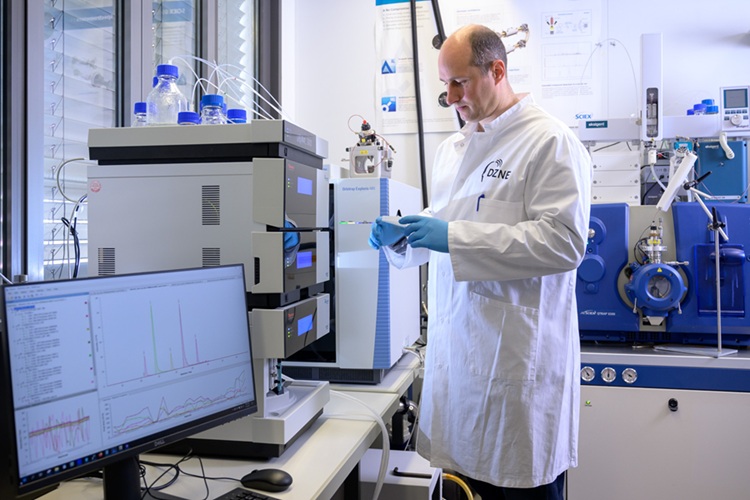
Blood Biomarker Test Could Detect Genetic Predisposition to Alzheimer’s
New medications for Alzheimer’s disease, the most common form of dementia, are now becoming available. These treatments, known as “amyloid antibodies,” work by promoting the removal of small deposits from... Read more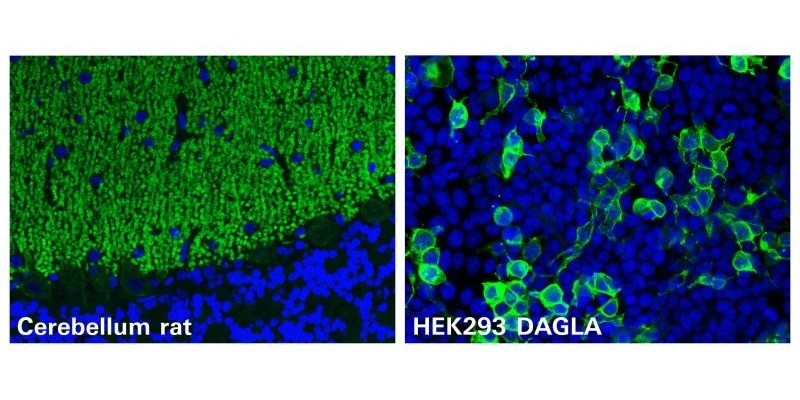
Novel Autoantibody Against DAGLA Discovered in Cerebellitis
Autoimmune cerebellar ataxias are strongly disabling disorders characterized by an impaired ability to coordinate muscle movement. Cerebellar autoantibodies serve as useful biomarkers to support rapid... Read more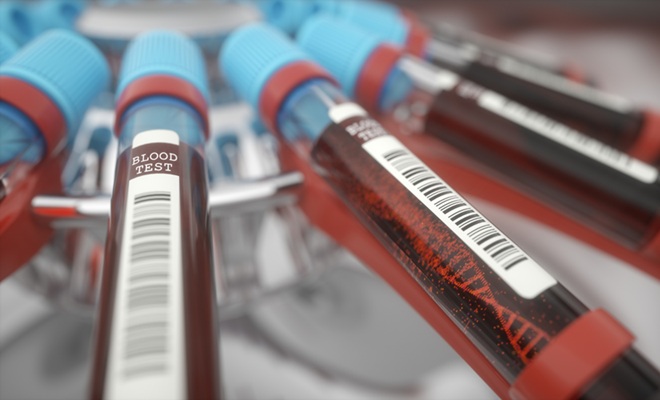
Gene-Based Blood Test Accurately Predicts Tumor Recurrence of Advanced Skin Cancer
Melanoma, an aggressive form of skin cancer, becomes extremely difficult to treat once it spreads to other parts of the body. For patients with metastatic melanoma tumors that cannot be surgically removed... Read moreHematology
view channel
New Scoring System Predicts Risk of Developing Cancer from Common Blood Disorder
Clonal cytopenia of undetermined significance (CCUS) is a blood disorder commonly found in older adults, characterized by mutations in blood cells and a low blood count, but without any obvious cause or... Read more
Non-Invasive Prenatal Test for Fetal RhD Status Demonstrates 100% Accuracy
In the United States, approximately 15% of pregnant individuals are RhD-negative. However, in about 40% of these cases, the fetus is also RhD-negative, making the administration of RhoGAM unnecessary.... Read moreImmunology
view channel
Stem Cell Test Predicts Treatment Outcome for Patients with Platinum-Resistant Ovarian Cancer
Epithelial ovarian cancer frequently responds to chemotherapy initially, but eventually, the tumor develops resistance to the therapy, leading to regrowth. This resistance is partially due to the activation... Read more
Machine Learning-Enabled Blood Test Predicts Immunotherapy Response in Lymphoma Patients
Chimeric antigen receptor (CAR) T-cell therapy has emerged as one of the most promising recent developments in the treatment of blood cancers. However, over half of non-Hodgkin lymphoma (NHL) patients... Read moreMicrobiology
view channel
Handheld Device Delivers Low-Cost TB Results in Less Than One Hour
Tuberculosis (TB) remains the deadliest infectious disease globally, affecting an estimated 10 million people annually. In 2021, about 4.2 million TB cases went undiagnosed or unreported, mainly due to... Read more
New AI-Based Method Improves Diagnosis of Drug-Resistant Infections
Drug-resistant infections, particularly those caused by deadly bacteria like tuberculosis and staphylococcus, are rapidly emerging as a global health emergency. These infections are more difficult to treat,... Read more
Breakthrough Diagnostic Technology Identifies Bacterial Infections with Almost 100% Accuracy within Three Hours
Rapid and precise identification of pathogenic microbes in patient samples is essential for the effective treatment of acute infectious diseases, such as sepsis. The fluorescence in situ hybridization... Read moreTechnology
view channel
Disposable Microchip Technology Could Selectively Detect HIV in Whole Blood Samples
As of the end of 2023, approximately 40 million people globally were living with HIV, and around 630,000 individuals died from AIDS-related illnesses that same year. Despite a substantial decline in deaths... Read more
Pain-On-A-Chip Microfluidic Device Determines Types of Chronic Pain from Blood Samples
Chronic pain is a widespread condition that remains difficult to manage, and existing clinical methods for its treatment rely largely on self-reporting, which can be subjective and especially problematic... Read more
Innovative, Label-Free Ratiometric Fluorosensor Enables More Sensitive Viral RNA Detection
Viruses present a major global health risk, as demonstrated by recent pandemics, making early detection and identification essential for preventing new outbreaks. While traditional detection methods are... Read moreIndustry
view channel
Cepheid and Oxford Nanopore Technologies Partner on Advancing Automated Sequencing-Based Solutions
Cepheid (Sunnyvale, CA, USA), a leading molecular diagnostics company, and Oxford Nanopore Technologies (Oxford, UK), the company behind a new generation of sequencing-based molecular analysis technologies,... Read more
Grifols and Tecan’s IBL Collaborate on Advanced Biomarker Panels
Grifols (Barcelona, Spain), one of the world’s leading producers of plasma-derived medicines and innovative diagnostic solutions, is expanding its offer in clinical diagnostics through a strategic partnership... Read more



